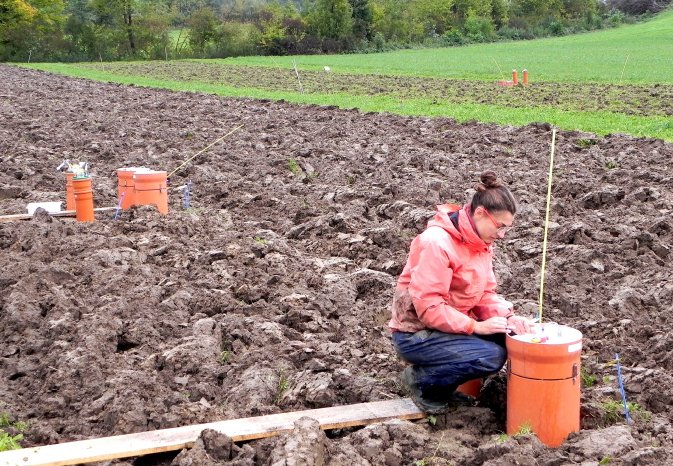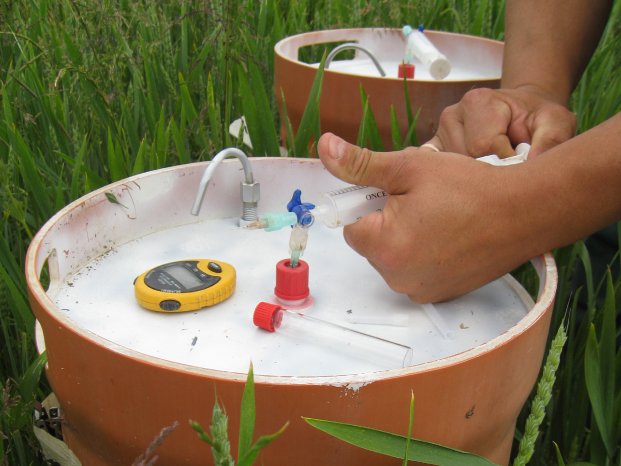Farmland resembles a natural meadow
A plough mixes humus about 20 cm deep into the topsoil. In a reduced tillage system, however, more humus builds up in the topmost 10 cm. Below that threshold, the humus content remains stable or decreases. Thus, the distribution of humus in a reduced tillage system is closer to a meadow than a field. This can prevent soil erosion and increase the presence and variety of microorganisms like bacteria and fungi.
Greenhouse gases: Timing is more important than type of soil cultivation
Neither one of the examined crops grass-clover and winter wheat showed a difference in nitrous oxide emitted from the two systems. Methane emissions are at the same low level. However, the weather conditions have a huge influence. Tilling wet soils, whether performed with a plough or a cultivator, is not only ill advised for reasons of soil protection, but also due to the high nitrous oxide emissions.
Information on reduced tillage
- For farmers: http://www.bioaktuell.ch/pflanzenbau/ackerbau/bodenbearbeitung.html
- For researchers: http://www.fibl.org/de/themen/reduzierte-bodenbearbeitung.html
Krauss, M., Ruser, R., Müller, T., Hansen, S., Mäder, P., Gattinger, A. (2017): Impact of reduced tillage on greenhouse gas emissions and soil carbon stocks in an organic grass-clover ley - winter wheat cropping sequence. Agriculture, Ecosystems & Environment 239, 324-333. doi: http://dx.doi.org/10.1016/j.agee.2017.01.029
- Available at: http://orgprints.org/31286/
- Available at: http://orgprints.org/31140/
- Available at: http://agrarforschungschweiz.ch/artikel/2017_06_2285.pdf
- Coop Sustainability Fund
- Federal Office for Agriculture (FOAG) within the framework of a CORE Organic II project
- Swiss National Science Foundation (SNF) within the framework of NRP 68
- Federal Office for the Environment (FOEN)



